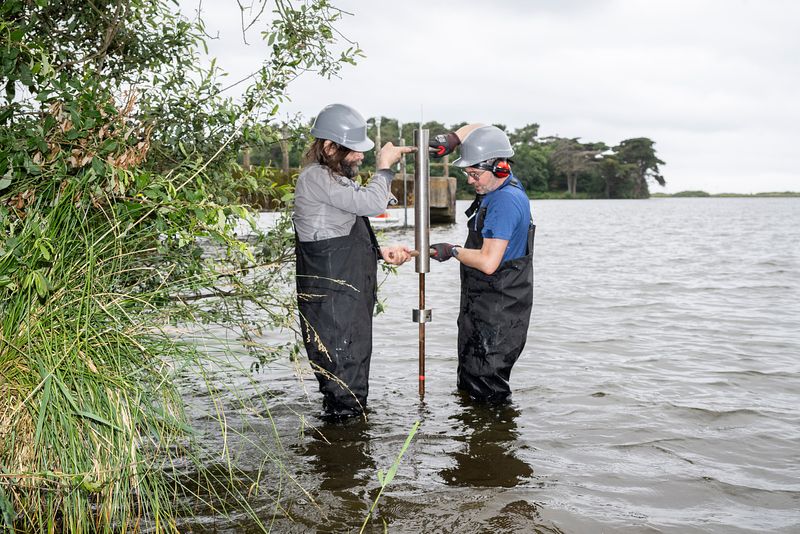Monitoring groundwater-river interfaces to understand river metabolism dynamics
Understanding groundwater-river exchanges is crucial for issues related to water quality and ecosystem health, as these exchanges partly determine river metabolism (related to respiration and primary production). River metabolism also depends on CO2 degassing to the atmosphere and biological responses, and it is especially important for small streams (Strahler order 1 to 3) where the groundwater-river interface can vary significantly in time and space. At the river reach scale, metabolism is influenced by temperature dynamics and partly controls nutrient fluxes and greenhouse gases (CO2, CH4, N2O).
The miniaturized near-field river metabolism measurement station (Mini-LOMOS 2.0) developed within the TERRA FORMA framework combines two new sensors for dissolved oxygen and CO2 measurement with the Mini-LOMOS device from Mines ParisTech Geosciences Department, which is dedicated to measuring water level and temperature as tracers of groundwater-river exchanges. Continuous and long-term measurements of dissolved oxygen will be made using optodes, while CO2 measurements will rely on emerging low-cost commercial sensors. Infrared sensors (NDIR optical measurement) coupled with extraction systems—either passive, measuring gas in a headspace behind a membrane, or “active,” with pumping and air circulation in a silicone tube—remain currently too expensive (equilibration system).
This low-cost, communicating (GSM or other protocol), easy and quick-to-deploy device offers new possibilities for field data acquisition : at high frequency (<30 min), over long periods (several months). With the acquired data, the goal is to develop and validate coupled models of flow and biogeochemical functioning of hydrosystems linked to rivers, capturing temporal dynamics from daily to seasonal scales.
Themes : Water Resources, Pollution
Updated on 21 juin 2025




